How Long To Let A Real Christmas Tree Settle Before Decorating
How to Care for a Real Christmas Tree
1) Choosing your tree
Christmas tree care starts in the planning phase before you've bought your tree as you'll need to decide where you want to put it, then choose a Christmas tree that's the right height, width and type for you. The location you choose should be away from heat sources such as radiators and fires and ideally close to a wall plug socket if you will be looking to have lights on your tree. Corners can be a good place as this keeps your tree out of the way of knocks and bumps and allows you to choose the best side of the Christmas tree to display. Once you've decided on a location in (or outside) of the home, use a tape measure to size up the space you have available and note down the dimensions.
If you're looking to visit a nursery or Christmas tree farm to choose your tree, don't forget to take the tape measure with you so you can check your preferred tree is actually the right fit. Alternatively, if you are looking to order a Christmas tree online for delivery from our Staffordshire nursery, include the measurements in the comments when you place the order and we'll pick the perfect tree for you. Avoid the temptation of choosing a tree that's taller than what you really need as you'll just end up having to cut off part of the base and potentially remove some of the lower branches, which may spoil the shape of your tree.


Next, you'll need to decide what type of tree you'd like to buy. There are four main types:
| 1) Nordmann Fir - the most popular type of tree in the UK with thick, soft, glossy needles that are dark green on the top and blue-green on the underside. Renowned for holding onto its needles the best of all Christmas trees, so you won't need to worry about cleaning up needles over the festive period, particularly if you want to install your tree in early December. The Nordman Fir is an unscented tree with a wide base to accommodate lots of presents and its soft needles makes it child and pet friendly. | |
| 2) Norway Spruce - the traditional Christmas tree with short and thin, generally lighter green pointed needles. It has a broad base but with a more triangular shape and attractive red-brown bark and a bushy habit. The Norway has a rich, coniferous fragrance and is the best value for any given height or size of tree. Needle retention is weaker than the Nordman Fir but can be minimised by placing your tree well away from radiators and other sources of heat and keeping it in plenty of fresh water. | |
| 3) Serbian Spruce - one of the newer types of Christmas tree on the market with a more slender shape, perfect for porches, corridors and smaller homes. Similar to the Norway Spruce but with soft, flatter blue-tinged needles which are almost white on the undersides. The branches are slightly drooping yet well spaced with sprays pointing upwards at the ends. Needle retention is better than the Norway Spruce but not as good as the Nordman Fir. It boasts a pleasant, strong fragrance and works well with a simple scheme of plain lights. | |
| 4) Alberta White Spruce - the Alberta is a lovely, compact, slow growing conifer which makes the perfect mini Christmas tree with dense branches and a bluey hue. It's conical form makes it ideal as a large table top or windowsill tree. We supply Alberta Spruce trees pot grown so you can plant your tree in a sunny spot outdoors after Christmas where it will combine well with winter flowering heathers and small spring bulbs. It will produce fresh green needles in the spring which mature to deep green over the year. | |
It's vital cut trees are fresh when bought. Needles should not be dry and dull or branches brittle. Needles on the outer part of the tree should not fall off when the tree is gently shaken. Some loss of internal needles is normal as these are naturally shed over the life of the tree. To check a tree's freshness, pull your hand along a couple of the branches to the ends; needles on a healthy tree should not fall off. Another way to check this is to drop the tree onto its base from 1 foot (30cm) above the ground. If choosing your own tree from a nursery or Christmas tree farm, bend a needle between your thumb and forefinger. It should form a "U" shape without breaking, unless the needles are frozen.
You might prefer to keep the memory of your Christmas tree alive by buying a root balled tree that you can plant outdoors after Christmas. We think this is a particularly good idea if it's your child's first Christmas so you have a lasting memory and can treasure the first tree which will grow with them. The roots will come wrapped with a ball of soil in plastic, which makes them heavier for any given size of tree. For more information on the different types of tree, please visit our page on Choosing between different types of real Christmas tree. At Jackson's Nurseries we sell all of the above types of tree, so you can shop for your Christmas tree online and have it delivered to your front door anywhere in the UK on a day of your choosing.
2) When to buy your Christmas tree
We would advise against buying your Christmas tree any earlier than the start of December. Remember that real Christmas trees have been living things and however well you care for them, they will only look their best for around 4 weeks. 'No needle drop' Nordman Fir trees will stay looking strong right through Christmas with the right care and attention if installed during the first week of December. If you're looking to choose a Spruce, particularly the Norway Spruce, we recommend ordering your tree for delivery in mid-late December to minimise the number of needles that will fall before Christmas whilst the tree is in your home (you can order anytime for mid- to late delivery dates).

Installing a Norway Spruce on the 1st December means it may start to look a little bit ropey by Christmas day (when it should be taking centre stage!) if the room is a little too hot or if you forgot to top up the water for a couple of days. At Jackson's Nurseries we grown many of our own trees on site which are cut regularly throughout December, so you can rest assured that you're getting a freshly cut tree whenever you choose to buy.
3) Getting your tree home
No one wants to damage or excessively dry out their Christmas tree before they get it home. If you're visiting a nursery or Christmas tree farm and will be taking it home by car, have the nursery net the tree for you. If it's not too tall to fit into your car, open the boot and passenger door and slide the Christmas tree in from the boot, base first. Have someone help you position the base in the front passenger foot-well with the top of the tree resting near the back windscreen in the opposite corner - reclining the front passenger seat to support the tree may help. Avoid using the heating on your way home to prevent the tree from drying out and put it in water as soon as you get home. If the tree is too large to fit inside your vehicle, make sure it is well secured to the roof or roof rack. If using a roof rack, attach it so the base is at the front of your car and the top of the tree at the back. Cut trees in particular don't like being exposed to high winds as they dehydrate the tree and may damage the branches, so it's best to avoid attaching the tree outside of your vehicle on a long journey on a motorway or A-road if possible.
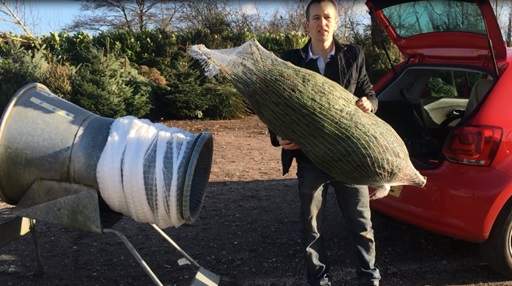

4) Storing your Christmas tree before you're ready to put it up in the home
Keep your Christmas tree in a cool, sheltered, dry place until you're ready to bring it into the house. If you won't be setting up your tree in the home on the same day, take off any netting and saw off one inch (2.5cm) from the bottom of the trunk. Make the cut perpendicular to the tree stem, going straight across. Do not cut a "v" shape out of the base or drill holes into the bottom of the trunk; this does not aid water absorption in any way and will just make it more difficult to keep your tree straight when putting it into the stand later. Make the cut with a saw with large "teeth" - don't try to use an axe which is likely to split the tree vertically. The reason for cutting off an inch at the bottom of the trunk is because when trees are cut, sap oozes out and hardens within about 5 hours when not in water, creating a seal and preventing further water absorption even when put in water again. You can ask the nursery or Christmas tree farm to make the cut for you if it won't take you long to get home.
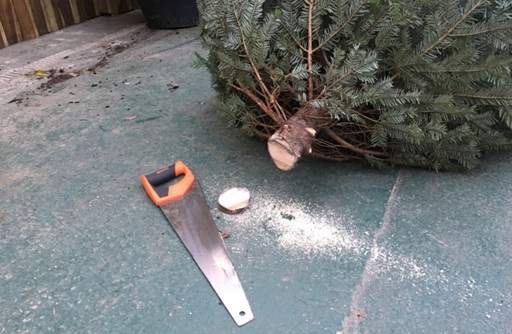
Your tree may absorb up to 4 litres of water in the first day so use a large bucket and keep it regularly topped up before you bring your tree into the home. If the water level falls below the base of the trunk for more than 5 hours at any time you'll need to cut a further inch off the base again which will leave less of a stem to hold the tree securely within the stand and may mean you have to take off some lower branches, potentially impacting the shape of your tree.
If you have opted for a rootballed tree, water the root ball well as soon as you get home, then let the water drain off for 24 hours before wrapping it back into the plastic to preserve moisture. The plastic will help protect your floors and carpets to a certain extent but we also recommend laying down extra sheets of waterproof material such as tarpaulin when you bring your tree indoors. Try to avoid having rootballed trees indoors for any more than 10 days to give them the best chance of survival when planted out, otherwise the tree will get too accustomed to the warmth. Also avoid constantly moving rootballed trees abruptly between different temperature extremes in/outdoors.
5) Installing your tree in the home
We recommend laying down a Christmas tree skirt, some tarpaulin or even some Christmas themed paper before bringing your tree into the home. This will protect from any water that escapes whilst you're topping up your Christmas tree stand over the coming weeks and help capture any needles falling from your tree. If your Christmas tree skirt fits over the cradle, you can still place a water barrier underneath the cradle and apply the Christmas tree skirt after your tree has been mounted. This will prevent pets from attempting to drink the water in the base as well as making your tree more presentable.
Before bringing your tree into the house, double-check that the water level where it's been standing hasn't fallen below the bottom of the trunk for more than 5 hours and, if it has, saw off another 1 inch (2.5cm) from the bottom of the trunk, cutting straight across perpendicular to the trunk, as described above. You can choose to buy a specialPainted Christmas tree stand or Stained Christmas tree stand to secure the base of the tree and provide watering space. Alternatively, you can opt for the traditional, tried and tested but rougher approach of using a bucket filled with small rocks or wood, by putting the base of your tree in first, then filling around the trunk with rocks or wooden logs.
Whatever approach you choose, make sure the tree is well secured and stable and do not chop chunks of bark off the side of the tree just to make it fit into your stand because it's the outer layer that provides most of the water absorption. We recommend two people set up the Christmas tree, so one can fix the base whilst the other holds the tree stable. Before you start decorating, ensure the tree is sitting straight as it'll be far easier to fix at this point rather than later. Allow at least a couple of hours for the tree to "settle" into shape before decorating.

6) Decorating your Christmas tree
For many people, decorating the Christmas tree is the most enjoyable part. However - it's also important to think about safety - with a bit of common sense a properly maintained Christmas tree should not be a fire hazard. If you have to install your tree away from an easily accessible wall socket and will be using electric lights, use an extensive cord and tuck it away tidily, remembering not to overload electrical sockets. Check your Christmas tree lights to ensure that the bulbs are working properly and inspect the chords for any damage or insecure connections. Using miniature lights that produce less heat and remember to turn them off when you go out and retire at night will reduce the drying of your tree. Newer LED (light emitting diode) holiday lights cost only pennies a season to run, so they are a good value, while they also decrease fire risk because they stay cooler. Never use candles on Christmas trees for obvious reasons. Replace any decorations that look worn or questionable - they're generally inexpensive to replace. Strategically position small and fragile ornaments out of the reach of pets and small children to prevent they being eaten or accidentally damaged.

7) Watering your Christmas tree
You should think of your Christmas tree in the same way as cut flowers in that it needs a constant supply of water which must be topped up on a regular basis. In fact, when your Christmas tree is bought, more than half its weight is water. When you first saw off an inch (2.5cm) from the base of your tree and place it in water it may absorb up to 4 litres of water over the first 24 hours, particularly if the tree has dried out from wind or a heated car on the way home. Thereafter, a rough rule of thumb is that a Christmas tree can be expected to absorb one litre of water for every inch (2.5cm) diameter of the trunk per day. For example, if you have a tree with a 2 inch or c5cm diameter trunk, it may absorb up to around 2 litres of water per day. Regular water is both good for the tree's vitality and also prevents it from drying out and becoming more of a fire hazard.
Keep your tree stand or pot regularly topped up with water because if the water level falls below the bottom of the base of your tree, the sap at the base will harden within about 5 hours, creating a seal and preventing further water absorption even if you were to top up the water supply again. If you have a Norway Spruce regular watering will also help retain the rich coniferous fragrance for longer. There is no need to spray the needles or branches with water on any type of tree. There have been a lot of myths about what to add to your Christmas tree water recently, whether it be aspirin, honey, sugar, plant food or anything else. None of these are necessary - plain water is best and this way if you accidentally bump the water tray you won't end up with sticky presents. If the water in your stand starts to smell a bit "off" it's probably because it's been sitting for too long, so change/top it up more regularly.
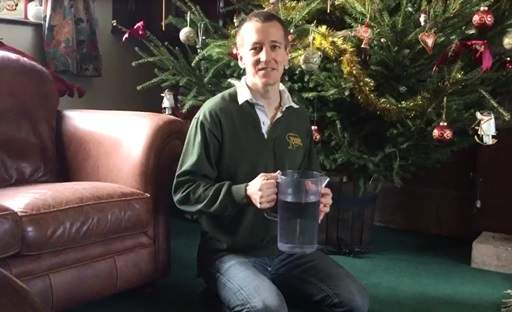
8) On-going Christmas tree Care
If you buy a variety other than the 'low needle drop' Nordman Fir more than a couple of weeks before Christmas you're probably going to need to tidy up a few fallen pine needles, even with the very best Christmas tree care. In fact, it's part of the life cycle of conifer trees that they drop their needles and this will accelerate if they are dehydrated. Use a dust pan and brush or vacuum cleaner, remembering to empty it regularly as lots of needles can clog up even a larger device. You'll need to tidy needles every couple of days to prevent them from accumulating, which is hazardous for children and pets. A well-watered tree will lose fewer needles but all fresh trees will lose some. Occasionally check for sap leakage from your tree that may have founds its way onto nearby furnishings and floor coverings - the sooner these are found, the easier they are to remove.
9) Disposing of your tree
Before disposing of a rootballed tree, first think about whether you could plant it out into the garden. Whilst there is no guarantee, we find trees that have been well cared for in the home stand a good chance. Make sure you choose a suitable location for the eventual height/spread of the tree and water well after planting, bearing in mind that some types of Christmas tree can reach a height of 15-20 metres (50-65 feet) within 20 years. Virtually all trees like a sheltered area out of the wind whilst young but a spot with lots of sunlight is also key.
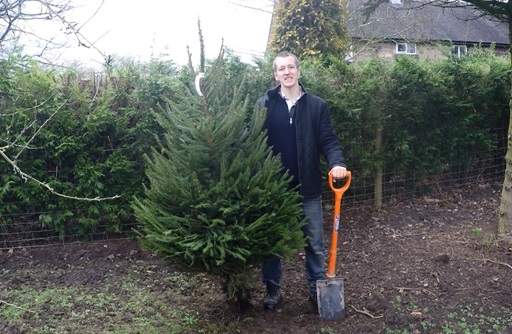
If this is not an option, or if you have a cut tree, they can sometimes be disposed of as garden waste, but check with your local council. Some areas may also have tree collection programmes, but these are reasonably limited. If you have space in your garden, leave your tree there until March/April when it can be chipped into garden mulch. Another option is to dispose of your tree in a (very) large pond or lake, where it will provide a wealth of hiding places for fish and water creatures - but ask permission first.
Alternatively, prop up your Christmas tree near a bird feeder as a hiding place and playground for small birds such as finches and robins. If you string your tree with slices of cranberry, orange, bread and other types of bird-friendly treats it will make a great haven and feeding ground for birds. You can even use the needle-like foliage to stuff small, fragrance pillows to freshen drawers and closets around the home. Just sew scraps of fabric into a ball and fill them with needles from your Christmas tree. Avoid burning any part of your Christmas tree in a wood stove or open fireplace as the needles and bark have a tendancy to spit out of the fireplace onto the floor.

Video on how to care for a real Christmas tree:
How Long To Let A Real Christmas Tree Settle Before Decorating
Source: https://www.jacksonsnurseries.co.uk/christmas-tree-care.html
Posted by: stewartfralke.blogspot.com

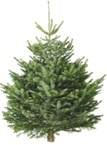
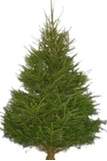
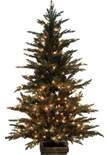
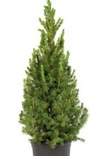
0 Response to "How Long To Let A Real Christmas Tree Settle Before Decorating"
Post a Comment